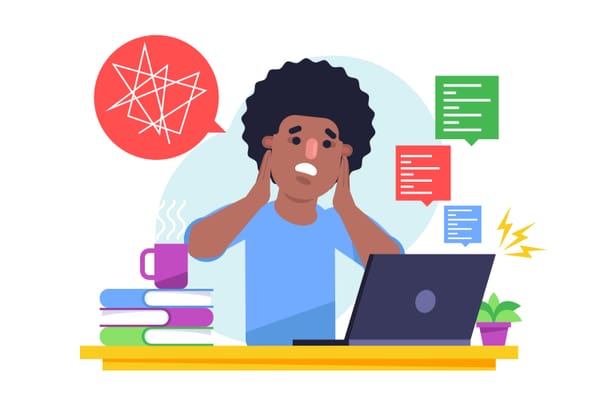COMMON HTTP STATUS & ERROR CODES AND WHAT THEY MEAN
Everyone at some point in time has encountered an HTTP status code while using your computer, these status codes also known as response codes serve as a means of interaction between the server and the internet browser, Status Codes appear on the screen of your monitor

Everyone at some point in time has encountered an HTTP status code while using your computer, these status codes also known as response codes serve as a means of interaction between the server and the internet browser, Status Codes appear on the screen of your monitor and they are usually 3 numbers they are categorized by their functions ranging from 100 to 500, thus below are the standard Status codes which a user can encounter and their meanings.
1xx (informational)
There is usually seen when the server acknowledges the receipt of your request and it is continuing the process, most times it is not seen.
Error 100 (Continue): means the first request has been accepted by the server and the client should move on with the request or ignore it if it has finished.
Error 101 (Switching Protocol): means the server understands the upgrade header field request and indicates the protocol it is switching to.
Error 102 (Processing): simply means the server has accepted the full request but has not yet completed it and a response is not available as of yet.
Error 103 (Early Hints): this is designed to be used by the user agent to preload resources, while the server prepares a response, it is intended to be primarily used with the link header.
2xx (Successful)
This status code means the request was successful and the browser has received the expected information, as a website owner all the resources on your webpage should return a 2xx status code which means visitors can see your website.
Error 200 (Ok): this means the request was successful, but the meaning of the success depends on the request method used, which could be TRACE, POST, PUT, HEAD, or GET.
Error 201 (Created): means the request made was successfully fulfilled and resulted in one or multiple new items being created.
Error 202 (Accepted): means that the request has been accepted for processing but the processing has not finished yet.
Error 203 (Non-Authoritative Information): this means that the request was successful. However, the meta-information that has been received is different from the one on the origin server and has instead been taken from a local copy.
Error 204 (No Content): simply means while the server has successfully fulfilled the request there was no available content for the request.
Error 205 (Reset content): means the user should reset the document that sent the request.
Error 206 (Partial Content): this is a response to the range header sent from the client when requesting only part of the resource.
Error 207 (Multi-Status): Transfers information about multiple resources in a case where multiple resources are viable.
Error 208 (Already Reported): This is mainly used inside the response element, to avoid repeatedly numbering the internal members of multiple bindings to the same collection.
Error 226 (IM Used): means the server has successfully fulfilled a GET request for the resource, and the response is a representation of the result of one or multiple instance manipulations applied to the current instance.
3xx (Redirection)
This means you have been redirected and the completion of your request requires further action. This commonly occurs when a webpage has changed its URI and you try to access it through the old URI, CMS would often redirect the user to the new path which would most definitely end in a 2xx but would first go through the 3xx redirection.
Error 300 (Multiple Choices): means the request has multiple responses and would want the user to choose one.
Error 301 (Moved permanently): means the resource aimed at has been assigned to a new permanent URI and any references to the old one in the future should use one of the URLs included in the response.
Error 302 Found (Previously “moved temporarilyâ€): This means the URL of the request has been changed temporarily.
Error 303 (See other): This is sent by the server to direct the client to get the requested resource at another URI with a GET request.
Error 304 (Not modified): this tells the client that the response has not been modified, which means the client can use the present cached version of the response.
Error 305 (Use proxy): directs the client that it should connect to a proxy and then repeat the same request there.
Error 306 (Switch proxy): this code is no longer in use, but it was in the past used to inform the client that the previous requests should use a specified proxy.
Error 307 (Temporary redirect): This is sent by the server to the client to direct the client to the requested resource at another URI.
Error 308 (Permanent redirect): this means the requested resource has been permanently given another URI and any reference should be made by using one of the enclosed URIs.
4xx (Client Error)
This means that the website or the page could not be reached and either the page is unavailable or the request contains bad syntax, this can hurt the credibility of your website when visitors can't find your page.
Error 400 (Bad request): this means the server could not understand the request because of invalid syntax.
Error 401 (Unauthorized): this means that the request has not yet been administered because the server requires user authentication.
Error 402 (Payment required): this is a response reserved for future use, originally designed for a digital payment system.
Error 403 (Forbidden): means the client has been rejected or has no rights to access the content.
Error 404 (Not found): this means that the server either did not find a current representation for the requested resource or is trying to hide its existence from an unauthorized client.
Error 405 (Method not allowed): means that the server knows the requested method but the method has been disabled and cannot be used.
Error 406 (Not acceptable): this code is sent by the server when it does not find any content following the criteria given by the user agent.
Error 407 (Proxy authentication required): means the client has to be authenticated by a proxy.
Error 408 (Timeout): means that the server did not receive a complete request in the time that it prepared to wait.
Error 409 (Conflict): this means the request could not be completed due to a conflict with the current state of the target resource and is used in situations where the user might be able to resubmit the request after resolving the conflict.
Error 410 (Gone): means the resource aimed at has been deleted and the condition seems to be permanent.
Error 411 (Length required): this means the server has rejected the request because it requires the content length header field to be defined.
Error 412 (Precondition failed): means the server does not meet multiple preconditions that were indicated in the request header fields.
Error 413 (Payload too large): means the server refuses to process the request because the request payload is larger than the server is able or willing to process.
Error 414 (URI too long): means that the server is refusing to process the request because the request-target was longer than the server was willing to interpret.
Error 415 (Unsupported Media Type): this simply means the server is rejecting the request because it does not support the media format of the requested data.
Error 416 (Range Not Satisfiable): means that the range specified in the Range header field of the request cannot be fulfilled.
Error 417 (Expectation Failed): means that the expectation indicated by the Expect request-header field could not be met by the server.
Error 418 (I'm a Teapot): this means that the server refuses to brew coffee because it is a teapot. It's a reference to a 1998 April fool's joke
Error 421 (Misdirected Request): means that the client request was directed at a server that is not configured to produce a response.
Error 422 (Unprocessable Entity): this means the request was well formed but the server was unable to follow it due to semantic errors.
Error 423 (Locked): means the resource that is to be accessed is locked.
Error 424 (Failed Dependency): this means the request failed due to the failure of the previous request.
Error 425 (Too Early): this means that the server is not willing to risk processing a request that might be replayed.
Error 426 (Upgrade Required): means that the server has refused to perform the given request using the current protocol pending an upgrade to a different protocol.
Error 428 (Precondition Required): means that the origin server requires the request to be conditioned.
Error 429 (Too Many Requests): this means the user has sent too many requests in a given time.
431 (Request Header Fields Too Large): this means the server is not willing to process the request because the request header fields are too large, but the request can be resent when the size has been reduced.
Error 451 (Unavailable for Legal Reasons): this means the user has requested an illegal resource.
5xx (Server Error)
This occurs when the server cannot complete a request even when the request appears to be valid, these errors are mostly server related thus when they occur you should start debugging your server to find out why it is not responding properly.
Error 500 (Internal Server Error): this means the server has encountered a situation that it does not know how to handle.
Error 501 (Not Implemented): this means the request cannot be handled because it isn't supported by the server.
Error 502 (Bad Gateway): means that the server received an invalid response while working as a gateway to handle the response.
Error 503 (Service Unavailable): this occurs when the server is currently not ready to handle your request, which could be due to server downtime or overload.
Error 504 (Gateway Timeout): simply means that the server acting as a gateway could not get a response.
Error 505 (HTTP Version Not Supported): this means that the version of HTTP used in the request is not supported by the server.
Error 506 (Variant Also Negotiates): means that the server has an internal configuration error which entails, that the chosen variant resource is configured to engage in transparent negation itself, therefore it cannot be a good endpoint in the negotiation process.
Error 507 (Insufficient Storage): means that the method could not be performed on the resource because the server is not able to store the representation that would be needed to complete the request successfully.
Error 508 (Loop Detected): means that the server has detected an infinite loop while processing the request.
Error 510 (Not Extended): means that more extensions are required for the server to fulfill the request.
Error 511 (Network Authentication Required): this means the client has to authenticate to gain network access.
These are the common codes that one can encounter while using your browser, if you are having server-specific errors and you wish to troubleshoot for the cause you can go back to our previous blog post or you can click on the link, Nonetheless, if the problem persists you can contact a professional I.T. personnel for consultation by clicking on the link




